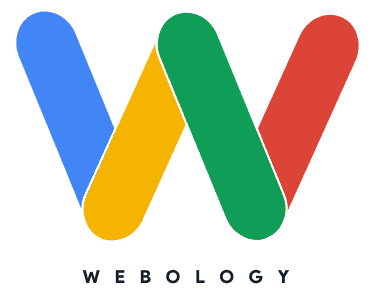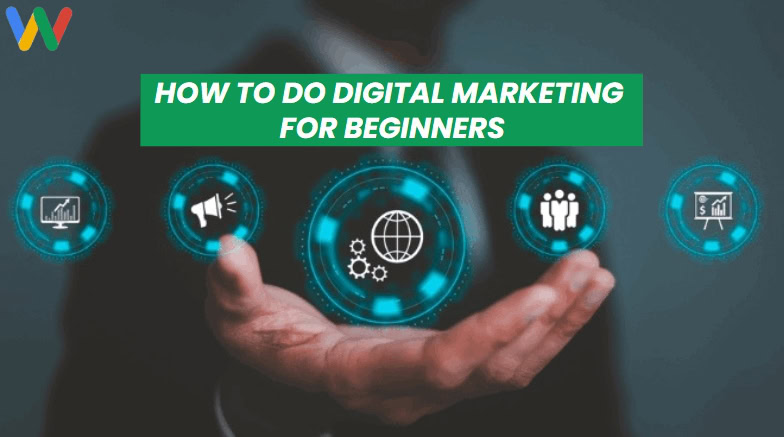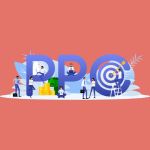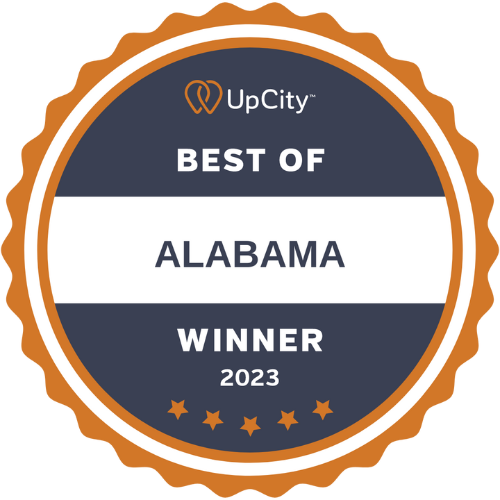Did you know that 81% of shoppers conduct online research before buying?
Establishing a solid online presence is crucial for every business, and digital marketing is the way to do that.
However, every digital marketing campaign has a unique goal. Sometimes it’s to drive website traffic, other times it’s to increase brand awareness or generate leads.
Of course, the ultimate goal is to make it easy for customers to find your business on all relevant digital platforms.
In this guide, you’ll learn the basics of digital marketing from an industry expert, including:
- The two basic digital marketing models
- Popular digital marketing channels/platforms
- And more
At my agency, we’ve helped countless businesses increase their online presence and achieve their goals through strategic digital marketing tactics.
Table of Contents
Let’s dive in.
How to Do Digital Marketing for Beginners: Understand the Basics
Digital marketing refers to promoting a business online through various strategies including:
- Search Engine Optimization (SEO)
- Social Media Marketing (SMM)
- Email Marketing
- Pay-Per-Click (PPC) Advertising
It helps business owners reach their target audience in a variety of ways and achieve business goals cost-effectively. It has several key advantages over traditional marketing, including a wider reach, better targeting, and measurable results. With digital marketing, businesses can easily track their progress, attribute leads to specific channels and make necessary adjustments to improve their strategy.
Inbound vs. Outbound Digital Marketing
Digital marketing can be broadly categorized into inbound and outbound.
Inbound digital marketing involves attracting prospects by producing helpful content consistently.
Examples of inbound marketing include:
- Blogging
- Social media posts
- Search engine optimization
These strategies involve drawing in potential customers rather than reaching out to them. Although they take time to start producing results, inbound strategies are great at creating a sustainable and cost-effective lead pipeline.
Outbound digital marketing involves reaching out to prospects, mostly with paid ads. Examples include:
- Cold calling
- Display ads
- Pay-per-click ads (Search and social media)
These strategies are more suitable for reaching a new market, launching a new product, promoting a time-sensitive offer, and generating quick results.
Inbound vs. Outbound: Which is Better?
Every business is unique. Your goal and resources are the two important factors to consider here.
For instance, for quick leads and customers, outbound marketing would be the right path.
Whereas, inbound marketing is the right way to go if you want to generate leads on autopilot. Many times it is seen that inbound marketing is a more sustainable and cost-effective approach for lead generation.
Inbound marketing focuses on creating valuable content and nurturing relationships with potential customers. This helps to attract potential buyers to your website, where they can learn more about your products or services.
On the other hand, outbound marketing involves interrupting potential customers with ads or cold calls. While it can be effective in generating quick leads, it can also be costly and result in a lower conversion rate.
The key to success is finding the right balance between inbound and outbound strategies. A well-rounded digital marketing plan should include both approaches to effectively reach and convert potential customers into paying clients.
5 Proven Digital Marketing Channels/Strategies
When promoting a business online, you’ll have to develop a marketing strategy, which would depend on your goal.
Let’s quickly explore the most popular ways to market a business online.
Search Engine Marketing (PPC Ads and SEO)
According to Statista, Google, the most popular search engine, processes over 84 billion searches every month.
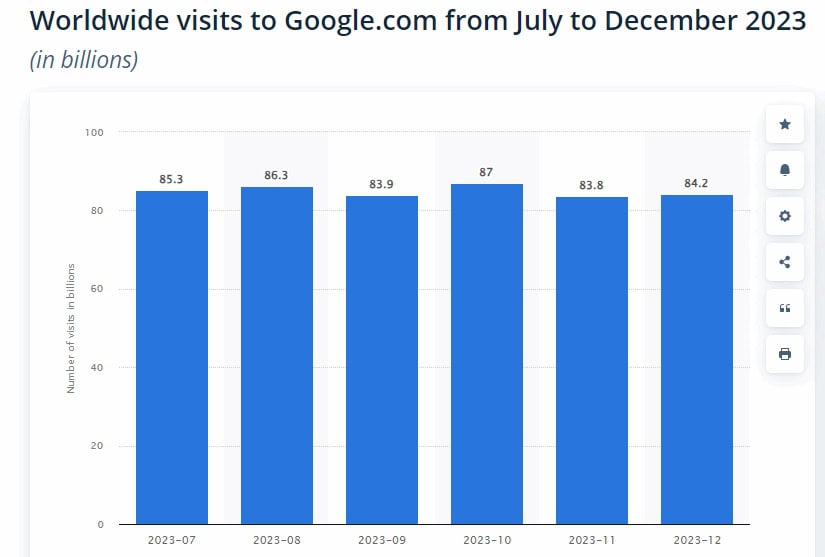
Most people start their online journey with a search. Search engines help users get answers to their queries by showcasing relevant results. There’s a certain level of trust associated with the websites that rank on the top of search engine result pages (SERPs). This is where PPC ads and SEO come into play.
You can promote a web page on search engines in two ways:
Search Engine Optimization (the Inbound Way)
Websites appearing on the first SERP (Search Engine Results Page) get most of the traffic. Most users will not scroll past the first page of results, which is why it’s crucial to have your website rank high on SERPs.
But, getting to that first page involves search engine optimization, a marketing strategy that includes:
Technical SEO: Keeping a site technically sound and easy to discover by search engines. It involves making sure your website’s code is clean, and that you have the right tags in place for search engines to understand what your page is about.
On-page SEO: Making the content on a website user- and search-engine-friendly. On-page ranking signals include the use of keywords, formatting, and internal linking.
Off-page SEO: Building an online presence and authority through high-quality backlinks. Authority signals remain the most important part of Google’s algorithm, so acquiring backlinks from reputable and relevant sources is crucial.
With these three components, your website can have a solid foundation for ranking high on SERPs. However, SEO is an ongoing process that requires constant monitoring and tweaking to stay ahead of the ever-changing search engine algorithms.
But, before that, you’ll need to hunt the right keywords to get started. You want to rank for the keywords that have:
- Less competition
- Medium-to-high search volume
You can find these keywords with Google’s Keyword Planner for free.
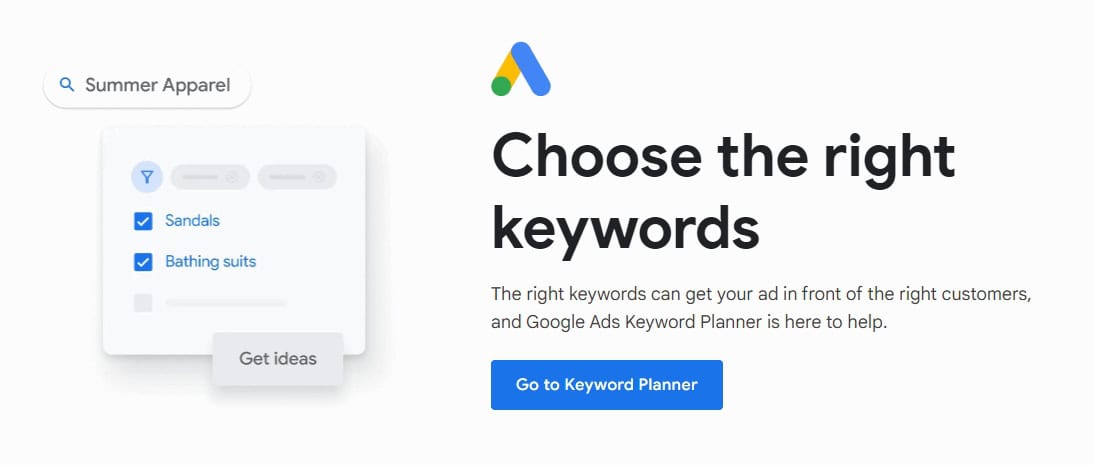
You’ll enter your main keyword and it’ll give you a list of related ones people are searching for. Another great way to find keywords is by using paid tools like SEMrush or Ahrefs, which provide detailed keyword analysis and can even show you what your competitors are ranking for.
Once you have your keywords, it’s time to implement them strategically throughout your website’s content. This includes incorporating them into the page titles, meta descriptions, headers, and body text. However, it’s important to not overuse keywords as this can be seen as spammy and hurt your rankings.
Search Engine Ads (The Outbound Way)
The second way to market a business on search engines is through pay-per-click ads.
The method involves paying the search engine for every click generated on your search ad, hence the name pay-per-click.
It involves upfront investment, but your ad appears at the top of organic search results, helping you get quick traffic.
Here’s an example:
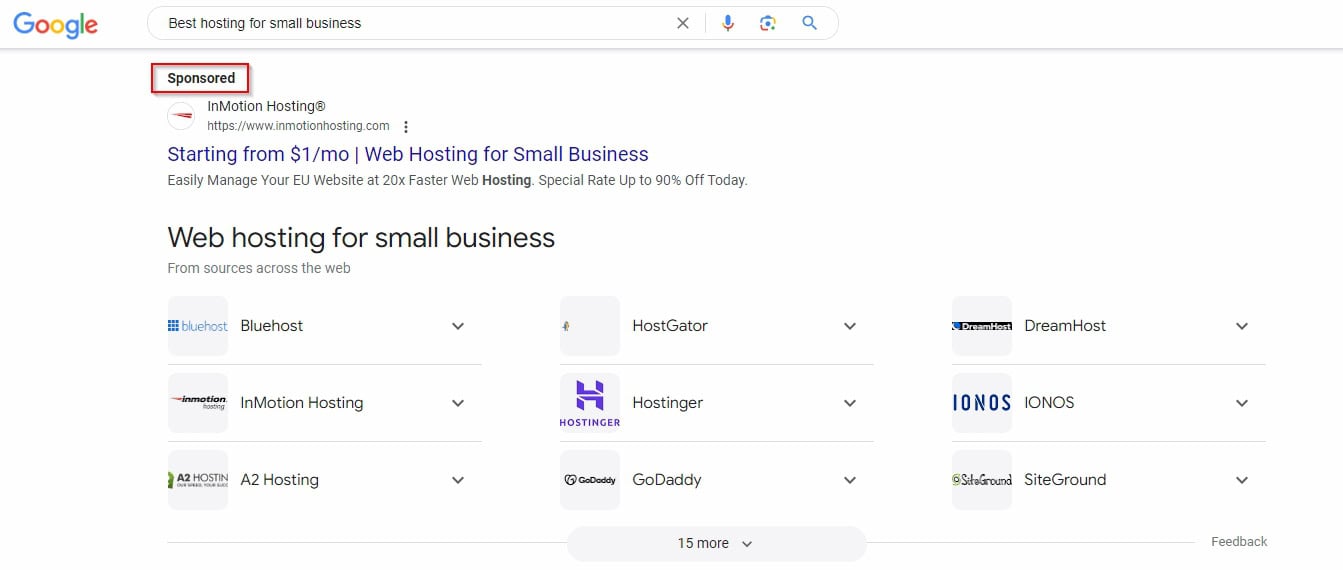
Ads appear on search engines with the “Sponsored” tag. When a user clicks on your ad, they are directed to your website.
This can be an effective way to reach potential customers who are actively searching for products or services related to your business. It also allows you to target specific keywords and demographics, making your ad more relevant and targeted.
However, it’s important to carefully monitor and optimize your pay-per-click campaigns to ensure you are getting the best return on investment. This can include regularly adjusting bids, testing different ad copy, and tracking conversions through tools like Google Analytics.
Email Marketing
Email marketing involves sending emails to people who are likely interested in your business.
The marketing channel offers an impressive ROI of $36 for every $1 spent.
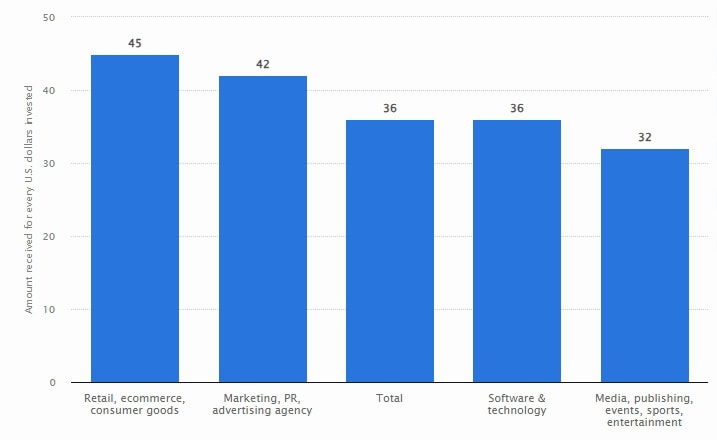
It’s probably the highest rate of return you can get among all digital marketing channels. It only takes a little time and effort to create a compelling email campaign that can bring in new customers and retain existing ones.
Plus, with email marketing, you have more control over your marketing messages as you own your list.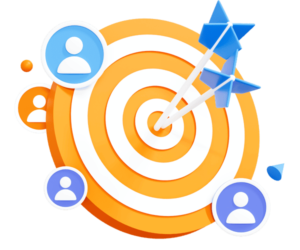
It starts with capturing prospects’ email addresses with different tactics.
One common and effective way to get people to provide their email addresses is by offering something for free, also known as a lead magnet.
For instance, a fitness brand might offer a free meal plan in exchange for signing up for their newsletter.
Once you have your prospects’ email addresses, you can send them all kinds of emails, such as:
- Value-based emails
- Product launch emails
- Promotional emails
- Company news updates
Value-based emails are a perfect way to build long-term relationships and convert prospects into customers with minimal resources.
To run your campaigns, you can choose any good email marketing tool, such as AWeber, MailChimp or ConstantContact.
We’d suggest building your email list right from the start as it requires minimal to no investment. Plus, you can leverage that list to market through other channels like social media and retargeting campaigns.
Facebook is just one example of this where you can upload your list of emails and target those users with ads or sponsored posts.
Creating a strong email marketing strategy can greatly benefit your business and help you reach your target audience in a personalized and effective manner.
Related: What is ROI in Digital Marketing?
Social Media Marketing and Advertising
There are two ways you can promote a business on social media platforms:
- Through organic content
- Through paid ads
Organic social media marketing helps you build authority and followership around your brand.
Paid ads, on the other hand, help you get in front of your target audience almost instantly.
Both work hand-in-hand to help you achieve your marketing goals on social media and it is very important for brands to stay active. Often during the sales cycle, a prospect will do research and check out the social media presence of a business before making a purchase decision.
This is why it is crucial to have a strong social media marketing strategy in place. It not only helps you reach potential customers, but also allows you to engage with your current ones and build brand loyalty.
Influencer Marketing
An influencer is anyone who has a sizable audience related to a particular topic or niche. There are influencers for almost every industry, from fashion to health and fitness. These influencers have a strong presence on social media platforms and their recommendations or endorsements can greatly impact the purchasing decisions of their followers.
Influencer marketing involves partnerships between content creators and brands.
For instance, a brand might reach out to a content creator with a decent niche following asking them to feature their product in a post.
The brand, in exchange for a lot of relevant eyeballs on their product, compensates the content creator with either a fee or free products.
Pro Tip: If you do engage in influencer marketing, it is important to remember that likes and followers can be faked. It is important to thoroughly research an influencer’s engagement and authenticity before partnering with them. An easy way to spot a fake influencer is to look at their engagement ratio, which is the number of likes and comments compared to their follower count. If the ratio is low, it could be a sign of fake followers.
Next Steps: Digital Marketing Courses You Can Take Online
Now that you understand the basics of digital marketing and how to use influencer marketing to boost your brand’s online presence, it may be beneficial to continue your education in the field. Luckily, there are many digital marketing courses available online that can help you further develop your skills and knowledge.
Some popular options include Google’s Digital Garage, HubSpot Academy, and Coursera’s Digital Marketing Specialization. These courses cover a wide range of topics such as SEO, social media marketing, email marketing, and more. You can also stay right here on this site and learn a lot from the Webology blog. We’re constantly publishing articles and resources to help you stay up-to-date on the latest digital marketing trends and strategies.
Frequently Asked Questions:
Is Digital Marketing Difficult?
While digital marketing may seem daunting at first, it is not an impossible skill to learn. With determination and the right resources, anyone can become proficient in digital marketing. It’s important to start with the basics and gradually build upon your knowledge.
What Skills Do I Need?
Digital marketing requires a combination of both technical skills and soft skills. Technical skills include things like data analysis, SEO optimization, and social media management. Soft skills such as creativity, communication, and adaptability are also crucial for success in this field.
How Can I Apply What I’ve Learned?
The best way to apply what you’ve learned in digital marketing is through hands-on experience. This could be through internships or freelancing opportunities where you can practice your skills and test out different strategies.
How to Do Digital Marketing for Beginners: Conclusion
Digital marketing is the process of promoting a product or service to an online audience.
It includes SEO, search engine advertising, social media marketing, email marketing, etc.
However, not all of these methods are suitable for every business.
The right one depends on your target audience, marketing goals, and resources.
Having said that, you can leverage multiple strategies to maximize your output.
For instance, you can leverage SEO and social media marketing to build your email list.
Whatever path you choose, tracking and monitoring your results is crucial to ensure you’re on the right track with digital.
